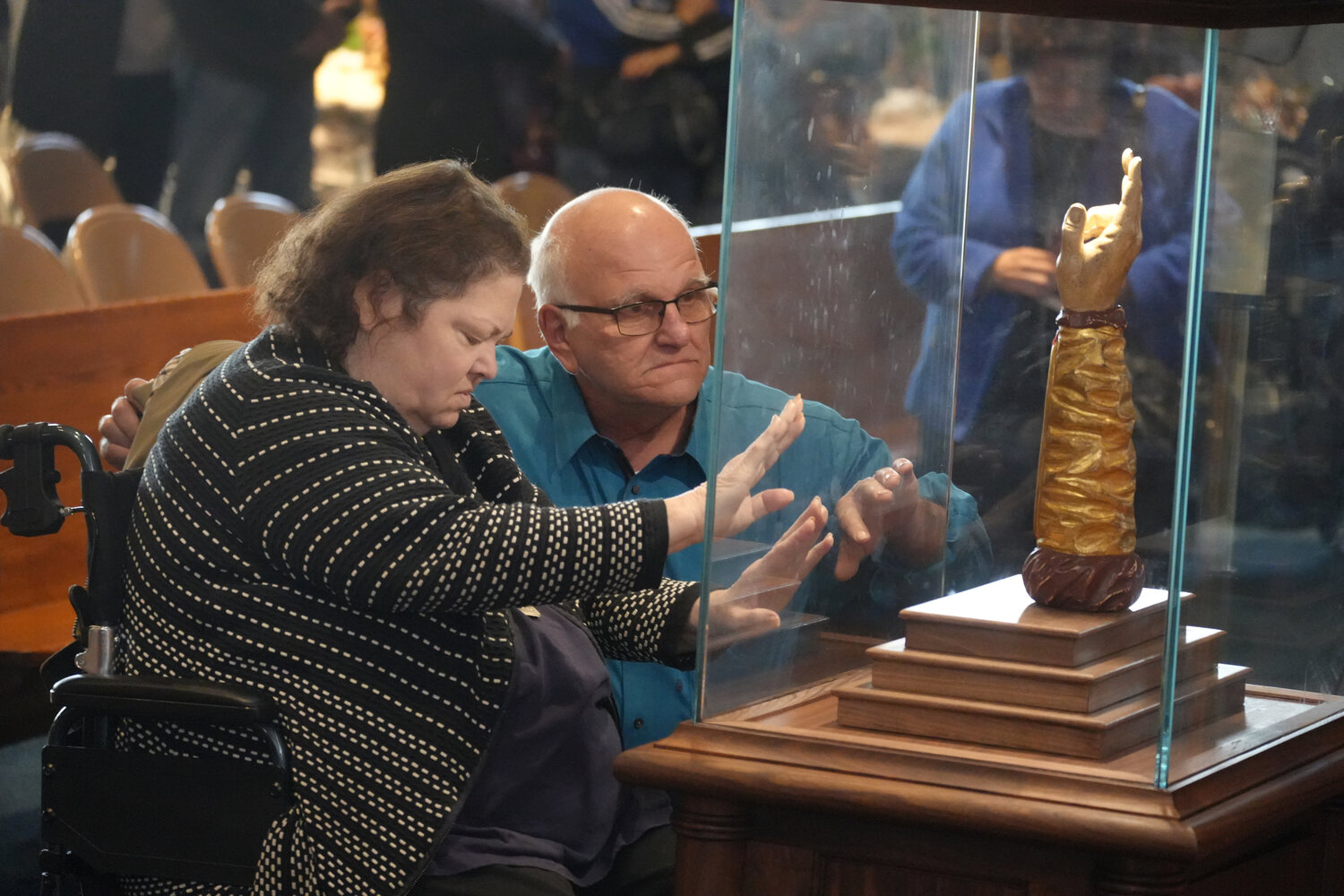1,000-year-old relic of St. Jude brings some hope to Glen Cove
Holding his Bible and crucifix tightly, Michael Schenc knelt before a relic of St. Jude, the patron saint of hope and impossible causes. He bowed his head in prayer, and then pressed his holy possessions against the glass casing protecting the relic, hoping they would become third-class relics.
Schenc prayed for his autistic daughter to better connect with the world, he said, and for his wife, who has been diagnosed with a neurological condition, and his father, who has Parkinson’s disease.
“Being able to carry some of that blessing from God and St. Jude, and be able to spread it out to loved ones that are in need of the impossible, is important,” Schenc, a Glen Cove resident, said. “It certainly brings a greater sense of reality to my faith.”
The 2,000-year-old Catholic relic, believed to be a bone of Saint Jude’s arm, was on display at St. Patrick’s Roman Catholic Church last Saturday. This is the first time the relic has left Italy, and it is being taken on a North American tour.
Denise Busse, of Glen Head, said she felt “pulled” to the relic when she first heard about its visit to Glen Cove. To Busse, seeing the relic was a reminder that asking for help through prayer helps keep her faith strong.
“It felt like a blessing that the spirit was with us,” Busse said of her experience with the relic. “And that we can get through anything, especially with what’s going on in the world today.”
Born in 1 A.D. in the city of Galilee, Jude Thaddeus was a farmer who, according to Catholic tradition, was, along with his brother James, personally called by Jesus to become one of his followers and spread the message of the Gospels. After Christ’s crucifixion and resurrection, Jude is said to have continued his evangelical mission by traveling to Mesopotamia, Armenia, Persia and Lebanon alongside his fellow apostle Simon.
In 65 A.D., while in Beirut, Simon and Jude were clubbed to death and beheaded by an idolatrous mob, and were buried in the city. Their remains remained in Beirut until 333 A.D., when Roman Emperor Constantine — as part of his mission to recover relics of the early Catholic Church — had the graves exhumed and the remains taken to Rome. There, Simon and Jude were placed in a crypt under St. Peter’s Basilica.
The Vatican permitted a portion of St. Jude’s arm to be removed and placed in an upright wooden reliquary resembling an arm giving a blessing. It was given the status of a first-class relic, as is any remnant of a saint’s body.
“St. Jude’s visit offers a unique opportunity to experience a connection with one of the most venerated figures in Christian history,” a statement from the Diocese of Rockville Centre read. “The visit provides an opportunity for individuals to experience intimacy with someone who dwells in Heaven and beholds God face-to-face.”
Glen Head residents Mario Reali and his wife, Linda, came to St. Patrick’s to offer prayers of good health. They prayed for Linda, who uses a wheelchair because she lost all the toes on her left toes to diabetes. They also prayed for their deaf daughter, who recently became legally blind.
“Two years ago, (Linda) was a leader of many people, cooking, getting around, taking care of her two girls and grandchildren,” Mario Reali said. “And now, all of a sudden, she can’t walk. I strongly believe that through faith, maybe St. Jude could help us.”
During the veneration, many pious visitors approached the Pastor of St. Patrick’s, the Rev. Dom Gabriel Rach, and asked him to bless their religious medallions. Rach said that although he has heard anecdotes about a global decline in the influence of religion, people still search for a deeper spiritual connection. He believes that maintaining that connection means accepting the spiritual with tangible aspects of faith.
“In a world where we’re surrounded by fake things, whether pictures or sounds, things that are made up in fleeting, it’s easy for us to get disconnected to our connections to the world,” Rach said. “When people are able to see that, it’s important that we remember, as human beings, we are, of course, flesh-and-blood creatures. And to engage the senses can be a very powerful thing.”

 56.0°,
Overcast
56.0°,
Overcast 




